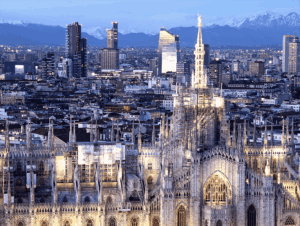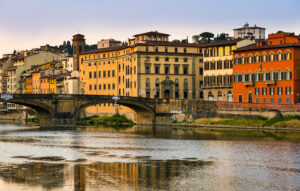While tech stocks gyrate and crypto markets convulse, an unexpected asset class is drawing the world’s wealthiest investors: 500-year-old Italian villas. Italy’s luxury property market—valued at €8.3 billion in 2023 and estimated at USD 3.99 billion in 2025—has become a geopolitical hedge, tax haven, and cultural trophy rolled into one. With prices in prime markets up 16% since 2019 and foreign buyers accounting for 38% of transactions, this isn’t mere tourism nostalgia. It’s a calculated play on scarcity, stability, and the irreplaceable value of heritage.
The Calculus of Culture
Italy’s property market defies conventional economics. Unlike glass-walled Dubai towers or Miami beachfronts, its prime assets are finite—protected by UNESCO designations and Byzantine preservation laws. In Florence, fewer than 30 significant historic properties trade hands annually. Lake Como’s 73 waterfront villas (only 12 ever listed this decade) now average €25,000 per square meter—a 22% leap since 2020.
This scarcity creates a self-reinforcing cycle. Wealthy buyers—particularly from the U.S. (28%), Germany (15%), and China (12%)—compete for assets that can’t be replicated. The result? A market where 17th-century frescoes and original pietra serena stonework command higher premiums than smart home tech.
Tax Tailwinds & Demographic Shifts
Italy’s secret weapon isn’t just aesthetics—it’s arithmetic. Since 2017, the “res non-dom” regime has lured 957 high-net-worth individuals by taxing foreign income at a flat €100,000 annually. For a billionaire, this represents a 90%+ savings versus France’s wealth tax or Germany’s 45% income tax.
This tax incentive has significantly boosted international interest, particularly in Milan. As high-net-worth residents are drawn to the city by its luxurious offerings and financial advantages, the demand for upscale properties has increased substantially.
The payoff is measurable:
- 19% projected growth in Italy’s ultra-wealthy population by 2028 (Knight Frank)
- €300 million+ in annual property taxes from foreign buyers (Agenzia delle Entrate)
- 42% of luxury buyers now cite tax incentives as a key motivator (Savills)
Market Performance and Resilience
While the overall Italian luxury home market recorded a modest 1% price uptick in 2024, the broader real estate market experienced a slight 0.5% decline, according to August 2024 reports. This divergence underscores the sustained appetite for high-end properties, especially villas, marking them as prime investment choices for the affluent.
Milan’s luxury market exemplifies this stability. After a 6.7% year-over-year increase in 2022 and a subsequent 3.5% rise in 2023, property prices in Milan’s luxury segment have stabilized in 2024, highlighting market maturation.
Beyond the Usual Suspects – Italy’s Emerging Hotspots
While Lake Como, Milan, Rome, and Florence dominate headlines, smart money is diversifying:
The “Dolce Vita” Triangle: Lucca (+18% since 2019), Forte dei Marmi, and Versilia coast: A trifecta offering medieval charm, yacht-ready marinas, and proximity to Carrara’s marble quarries—critical for authenticity-obsessed renovators.
Sardinia’s Silent Surge: Costa Smeralda transactions rose 14% in 2023, with Russian and Middle Eastern buyers fueling a €4.2 billion hospitality boom—including the €200 million refurbishment of Hotel Cala di Volpe.
The Alpine Play: With Milan-Cortina’s 2026 Winter Olympics driving €1.2 billion in infrastructure upgrades, Cortina d’Ampezzo chalets now appreciate at 9% annually—outpacing Swiss rivals.
Evolving Luxury Preferences
In recent years, preferences in the luxury sector have shifted, with buyers increasingly favoring larger and more adaptable spaces. Today’s high-end homes emphasize features such as spacious outdoor areas, dedicated home offices, and state-of-the-art smart home technologies. These trends underscore a broader move towards a more comfortable and flexible lifestyle, a shift hastened by the global uptick in remote work.
Sustainability is increasingly aligned with luxury, particularly in Milan. The city is introducing distinctive residential projects that cater to eco-conscious buyers. A prime example is Bosco Verticale, celebrated for its innovative vertical forest design that integrates greenery into urban living.
The Hospitality Gold Rush
Luxury hotels aren’t just accommodations—they’re Trojan horses for real estate investment. In 2023:
- Six Senses acquired Rome’s 18th-century Palazzo Salviati Cesi Mellini for €85 million
- KSL Capital Partners injected €40 million into Lake Como’s Il Sereno Hotel
- Four Seasons secured a €150 million loan to convert a Venice palazzo into 50 residences
These deals reflect a broader institutional shift: Private equity now accounts for 32% of Italy’s hospitality transactions, up from 11% in 2018 (JLL Research).
The growing presence of international funds and foreign capital is increasingly attracting domestic developers to form joint ventures as a way of gaining a foothold in the country and enhancing their financial strength and management expertise.
Three converging factors suggest this boom is sustainable:
- Supply Crunch: Construction costs up 14% since 2021, with prime land prices doubling in Capri and Portofino.
- Currency Play: A 12% weaker euro against the dollar since 2022 makes Italian assets a relative bargain for U.S. buyers.
- Generational Shift: 68% of buyers under 50 now prioritize “experiential value” over square footage (Coldwell Banker).
The Eternal Investment
Italy’s luxury market isn’t just surviving global turbulence—it’s thriving because of it. In a world where NFTs vanish and office towers sit empty, a Florentine palazzo offers something no algorithm can replicate: permanence. As one Milanese architect dryly notes, “The Medici family’s 15th-century portfolio is still appreciating. That’s a track record even BlackRock can’t match.”
For investors willing to navigate labyrinthine regulations and think in century-long horizons, Italy offers the ultimate paradox—a cutting-edge investment in obsolescence.



